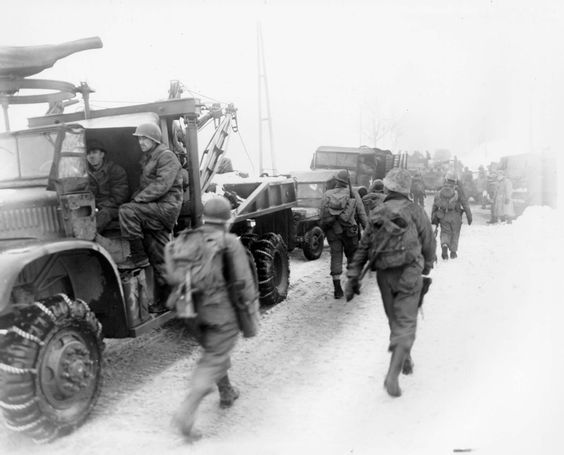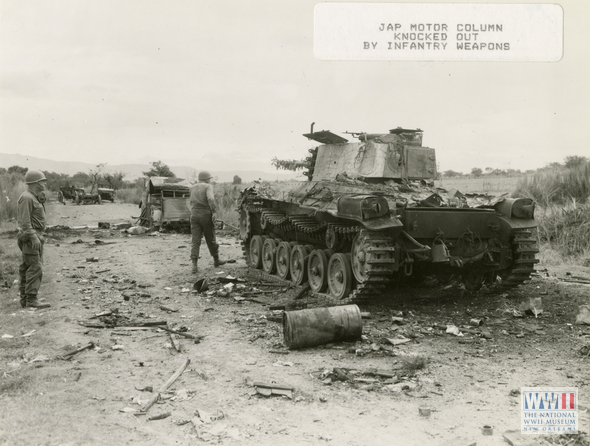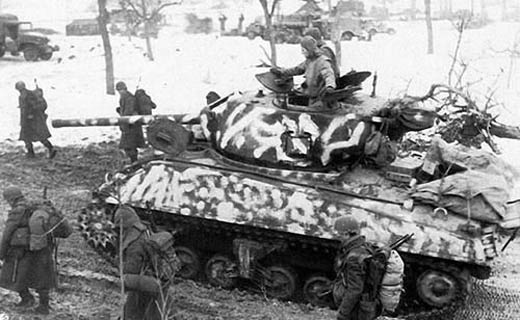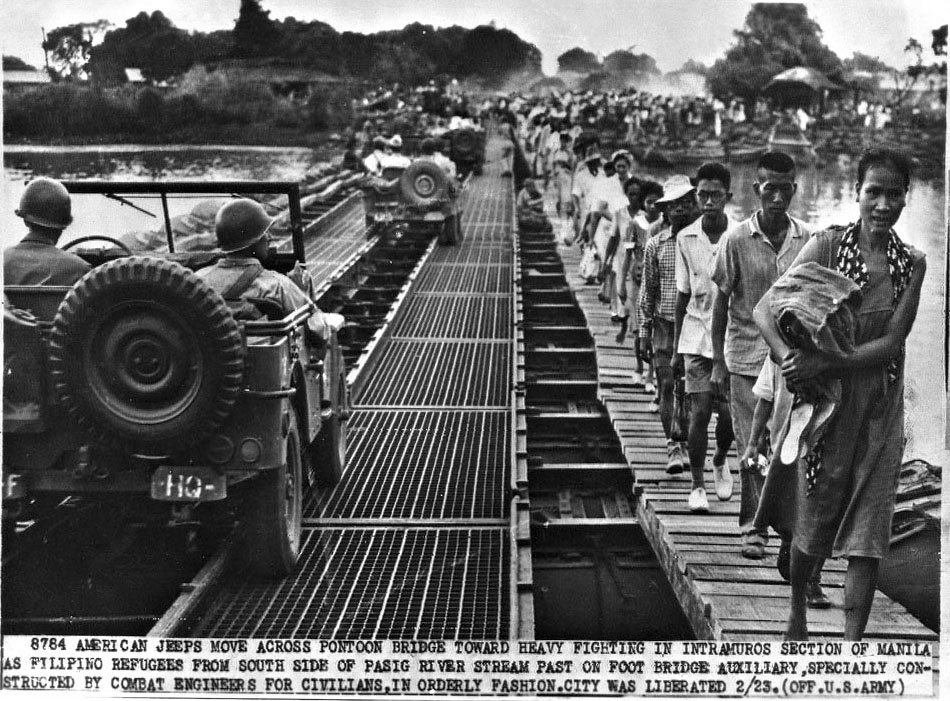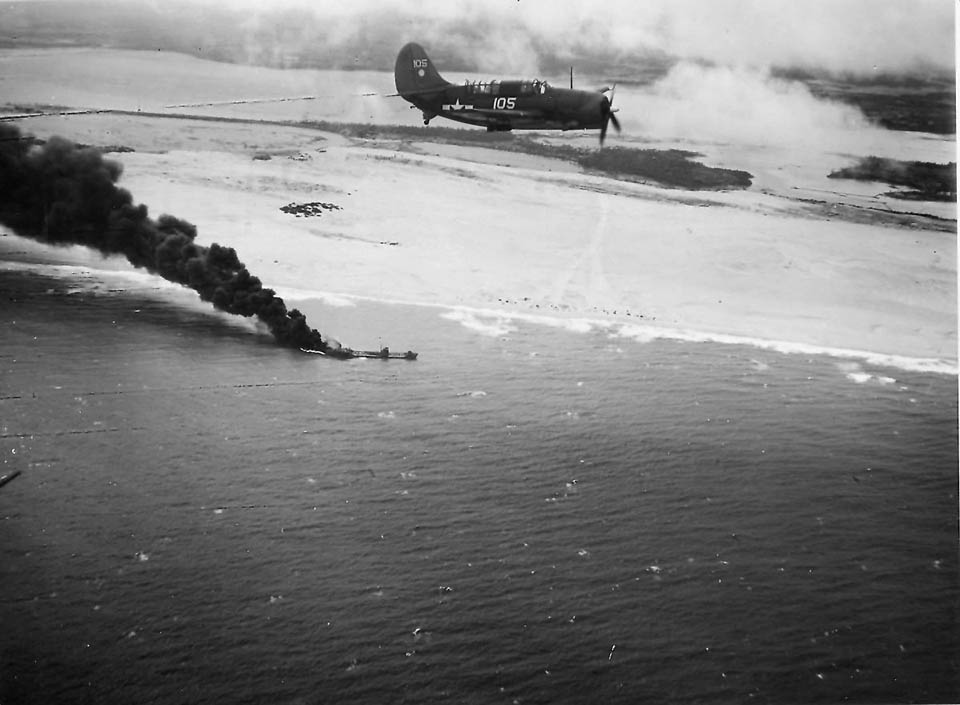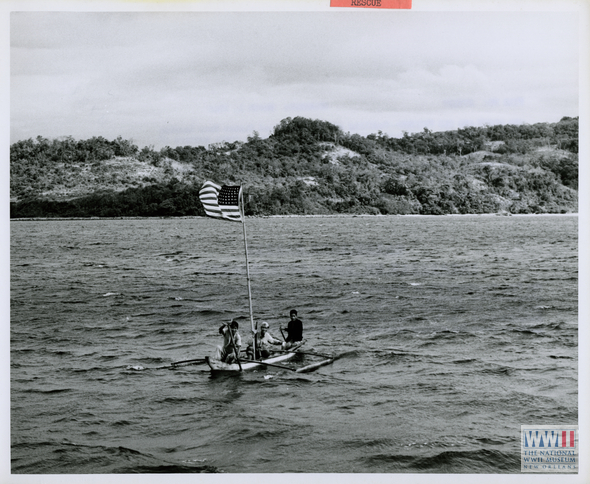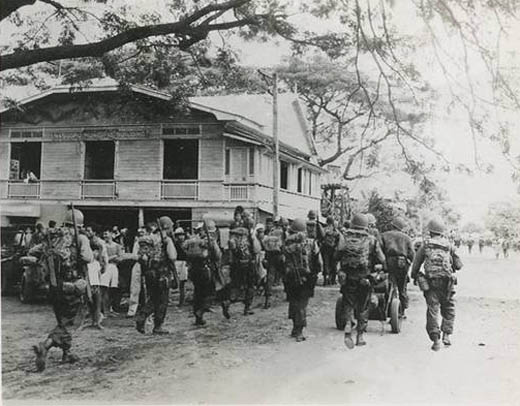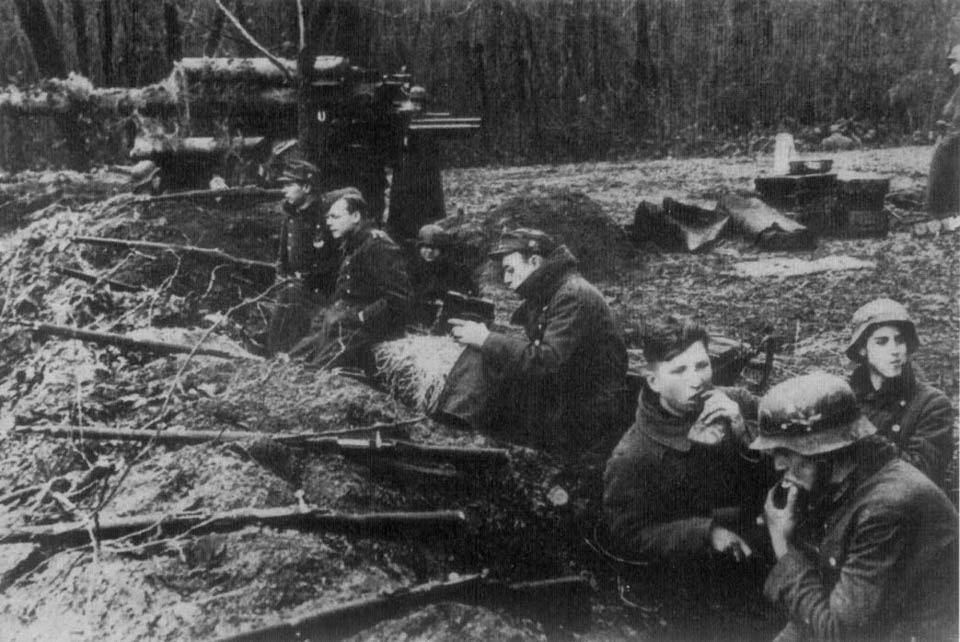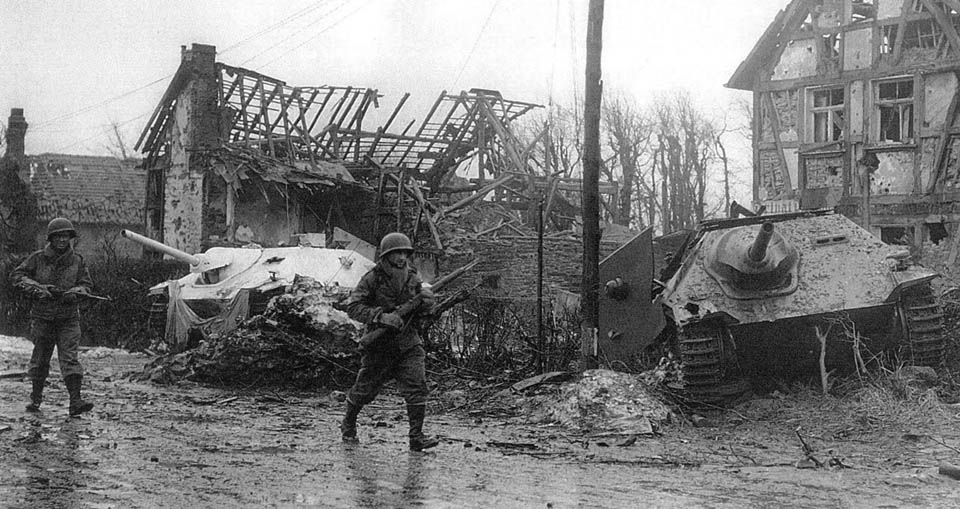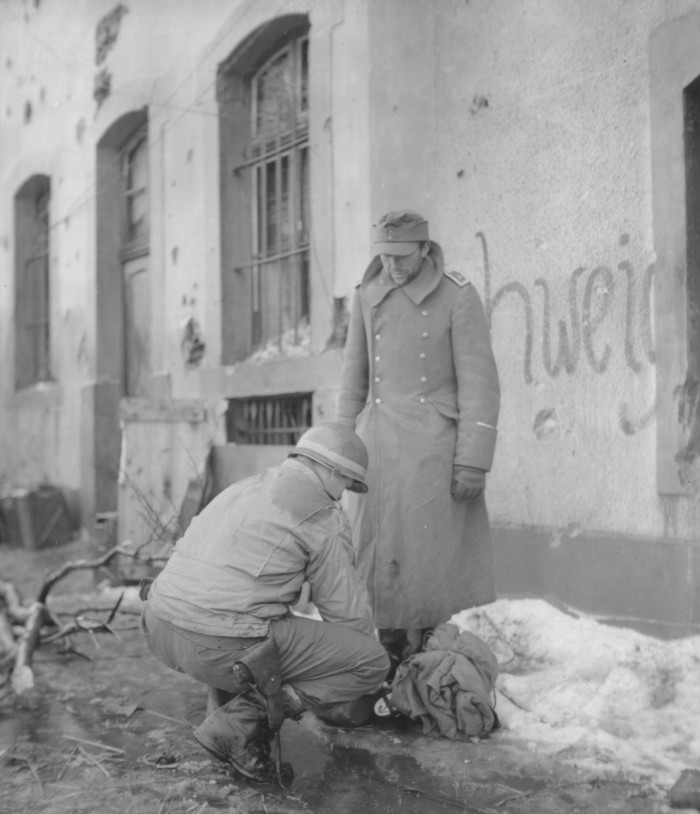Air Operations, CBI
BURMA- 12 10th Air Force B-25s attack troops and stores at Namlan.
- More than 50 10th Air Force P-47s attack troops and supplies at numerous locations.
- 14th Air Force P-51s strafe targets of opportunity along rail lines near Pinghan.
Air Operations, Europe
RAF BOMBER COMMANDEvening Ops:
Minor Ops:
- 8 Mosquitos are sent to the Hansa benzol plant at Dortmund and 6 to Duisburg.
- 1 Mosquito from the Dortmund raid crashes in Holland.
- The weather starts to improve at the beginning of February and Bomber Command commences an almost unbroken period of operations of the most intense and concentrated nature which will continue until a halt is called to the strategic-bombing offensive in April. The first round of raids, however, are not very effective because of poor weather at the targets.
Air Operations, Formosa
- 90th Heavy Bomb Group B-24s attack airfields.
- 18th Fighter Group P-38s down a Ki-43 'Oscar' fighter and an A6M Zero over the airfield at Koshun at 1210 hours.
- 35th Fighter Group P-47s down 6 A6M Zeros near Formosa between 1516 and 1530 hours.
- During the night, 63rd Heavy Bomb Squadron SB-24s attack the Okayama airfield.
Air Operations, Pacific
B-29s sink a giant floating dock at Singapore.
[Air Operations, Philippines
- XIII Bomber Command B-24s attack the Cavite naval base.
- 3rd Light Bomb Group A-20s strafe landing beaches to help cover a US Army landing force going ashore at Nasugbu, Luzon.
- Rotating flights of 4 P-38 or P-47 fighter-bombers are available throughout the day for on-call support missions, and a number of these are employed against buildings and the Batangas airfield on Luzon.
- When 12 38th Medium Bomb Group B-25s locate 3 Japanese destroyers on their way from Formosa to Luzon, 1 destroyer is sunk and the other 2 are severely damaged.
Air Operations, Volcano Islands
- 20 VII Bomber Command B-24s attack Iwo Jima.
- During the night, 9 VII Bomber Command B-24s conduct snooper raids against Iwo Jima.
Baltic
The German liner Wilhelm Gustav, which is filled with civilian refugees from East Prussia, is sunk by the Soviet submarine S13 off the Hela Peninsula. More than 7,000 peopole drown.
[China
China is sliced in half as the Japanese capture Kukong (Shaokuan), the last Chinese strongpoint on the Hankow railroad.
[Diplomatic Relations
The Czechoslovakian Government in London recognizes the Polish Lublin Government as the Provisional Government of Poland.
[Eastern Front
In East Prussia, the Russians occupy Heilsberg (Lidzbark Warminski) and Friedland (Mieroszow), south of Königsberg. In Germany, the 1st Belorussian Front occupies Zehden on the east bank of the Oder, but for some time this is to be the nearest that the Red Army gets to Berlin. East and southeast of Zehden, several Brandenburg towns - Landsberg, Schwiebus, Miedzyrzecz and Züllichau - fall into Russian hands.
In Hungary the German garrison in Budapest holds out doggedly. The violent counterattack by the German armor north of Lake Balaton has breached the line of the 3rd Ukraine Front. The Russians have had to send huge reinforcements to plug the gap, and now they are pressing hard to restore the position.
EAST PRUSSIAHeilsberg and Freidland fall to the Soviets.
GERMANYThe 2nd Guards Tank Army is now ins Zehden, only 60 miles from Berlin. The Soviet 5th Shock and 8th Guards Armies are also on the Oder, but have been halted by resistance. A unit of the Soviet 5th Shock Army, commanded by Col Khariton Episenko, occupies Kienitz. At the railway station the station master asks Episenko if he is going to allow the Berlin train to leave. Episenko replies: 'I am sorry, station master, but that is impossible, the passenger service to Berlin will undergo a short interruption - let's say until the end of the war.'[MORE]
[Germany, Command
Gordon Gollob, with 150 victories, succeeds Adolf Galland as General der Jagdflieger.
[Pacific
- The US submarine chaser PC-1129 is sunk by a suicide boat in the Philippine Islands area.
- The Japanese destroyer Ume is sunk by US Army aircraft off Formosa.
Philippines
On Luzon the US 6th Army begins the final phase of the attack on Manila. The XIV Corps advances on Calumpit and the XI advances to the base of the Bataan peninsula, coming near to some strong enemy positions in the area of Zigzag Pass, 3 miles northeast of Olongapo. The strongest Japanese resistance is encountered by the I Corps, in the area of Muñoz.
South of Manila Bay, after the usual preparation by aircraft and warships, the US 8th Army lands most of Gen Joseph Swing's 11th Airborne Div (8,000 men) near Nasugbu. Adm William M. Fechteler leads the naval support with a cruiser and 8 destroyers. The operation is completely successful, and there is little Japanese resistance. The Americans occupy Nasugbu, Guagua and Lian and penetrate quickly into the interior toward Mount Tagaytay.
[United States, Home Front
16 war workers' children are killed in a fire at a nursery in Auburn, Maine.
[Western Front
Advance guards of the US 1st and 3rd Armies meet near Widdau. While the V Corps, 1st Army, advances in Monschau forest east of Elsenborn, the XVIII Airborne Corps penetrates into Buchholz Forest, where it crosses the German frontier.
Units of the VI Corps, US 7th Army, launch an attack along the line Oberhoffen-Drusenheim.
[Images from January 31, 1945
|
|
|
|
|
|
|
|
|
|
Sherman Tanks in Schleiden |
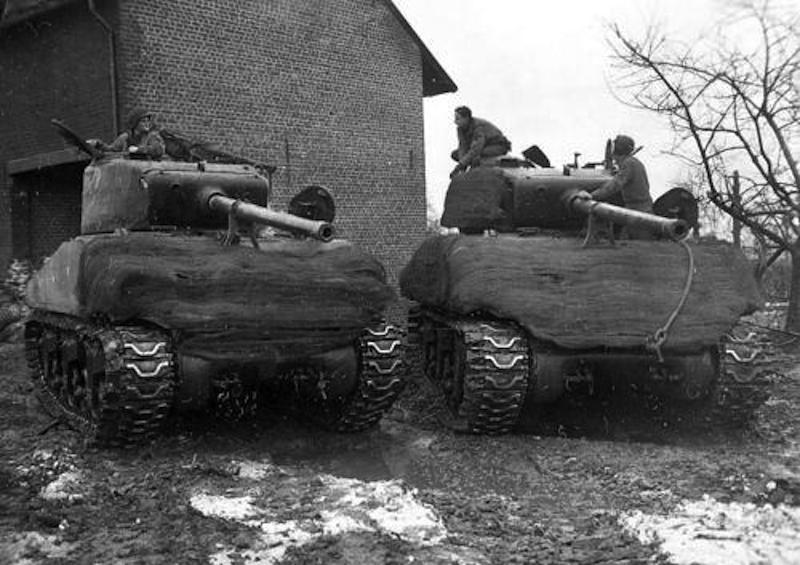 |
